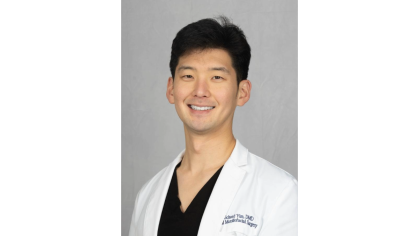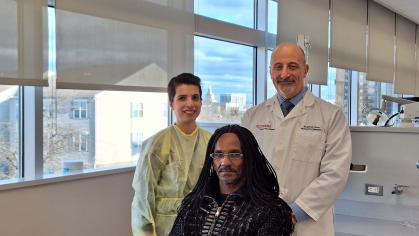RSDM Increases Efforts to Fight Patient Tobacco Use
 You might have seen the ad where a teen pays for cigarettes by yanking out his own tooth. Created by the FDA to prevent kids from smoking, it graphically underscores the damage that cigarettes can inflict on oral health.
You might have seen the ad where a teen pays for cigarettes by yanking out his own tooth. Created by the FDA to prevent kids from smoking, it graphically underscores the damage that cigarettes can inflict on oral health.
To help patients kick the habit, three RSDM faculty received intensive lessons this month on the best methods to combat tobacco use. The training, supported by a $4,800 ADA grant, was run by the Rutgers Tobacco Dependence Program, which is at the forefront of research on smoking addiction and cessation.
“It’s for improving patient health through dentist-driven education,’’ explains Dr. Shawn Kelly, the project's principal investigator. “Dentists are in a great position to do this because they typically see their patients more often than a physician normally would. Phycisians may only see their patients once a year for a physical. We’ll see someone twice a year or more for cleanings and exams. And we're often able to spend more with a patient than physicians usually do.’’
Faculty trained under the program will prepare students to hold counseling sessions over time and prescribe anti-smoking aids like nicotine gum, patches and Zyban, a medication that cuts back on cigarette cravings.
At RSDM, the program will begin at its three extra-mural sites in South Jersey, where it will be incorporated into the curriculum.
Kelly is also planning to add a research component at the South Jersey sites. “Our goal is to study patients six to 12 months to check their progress,’’ he said.
At the training sessions, faculty learned about marketing tactics used by the tobacco industry, such as the 1980s animated character Joe Camel, regarded as an effort to recruit future smokers. Among children, he was once more recognizable than Mickey Mouse.
They learned about the demographics of smokers. In New Jersey, 16 percent of residents smoke, compared to the national rate of 20 percent. They also heard evidence that smoking is more common among the mentally ill and those with HIV.
''We saw a real need for this program,’’ says Kelly. “Last year, we conducted a survey and found that most of the patients that smoke are interested in quitting or have tried quitting before. More than 60 percent said they would be interested. ‘’



